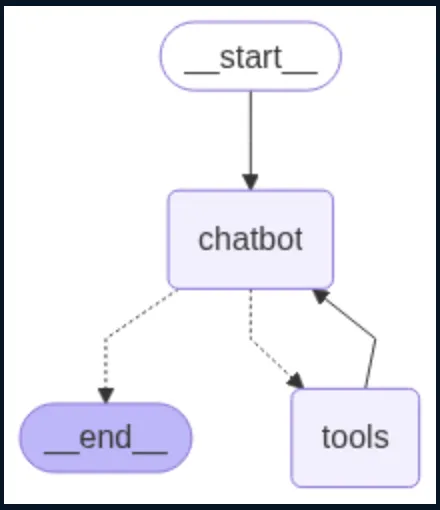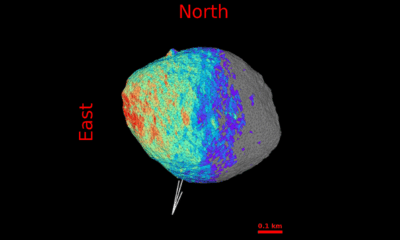Technology
Build an Intelligent Chatbot with LangGraph and Django

Creating a sophisticated chatbot that integrates seamlessly with applications is now more accessible, thanks to tools like LangGraph and Django. This article outlines a step-by-step approach to building a robust chatbot from the ground up, combining these two powerful platforms for a functional and intelligent solution.
The process begins with setting up the development environment, which includes installing Python dependencies and cloning the project repository from GitHub. For this project, users need to ensure they have Python 3.12 and Pipenv installed. The initial steps involve using the command line to clone the repository and set up the necessary packages:
“`bash
git clone https://github.com/Badribn0612/chatbot_django_langgraph.git
cd chatbot_django_langgraph
pipenv install
“`
Once the environment is ready, developers can define the chatbot’s logic using LangGraph. This tool allows for the creation of organized, multi-step workflows that enable the chatbot to handle conversations efficiently. The core logic is structured around a state schema that tracks message history, ensuring that the chatbot can maintain context throughout user interactions.
Defining the Chatbot Logic
The key component of the chatbot’s functionality lies in its ability to integrate with various language models. By initializing a chat model with fallbacks, the chatbot can switch to an alternative model if the primary one experiences issues. In this case, Google Gemini is used as the primary language model, with Llama 3.3 70B serving as a backup.
The integration of search tools further enhances the chatbot’s capabilities. For instance, the Tavily Search tool can provide real-time information retrieval when the chatbot encounters queries beyond its initial knowledge base. This combination of logic and tools creates a dynamic and responsive chatbot system.
To illustrate the chatbot’s design, a function is defined within LangGraph to invoke the language model based on user input. This modular approach allows for sophisticated conversation flows, including branching and looping, thereby providing an interactive experience for users.
Building the API with Django
With the chatbot logic established, the next step is to create an API using Django. This involves several steps, starting with app configuration. After setting up the app in djangoapp/apps.py, developers need to register it in the main settings file to ensure Django recognizes it.
The API endpoint is created to handle incoming POST requests, allowing the chatbot to receive user messages and return responses. The following code snippet exemplifies how to set up the endpoint in djangoapp/views.py:
“`python
@csrf_exempt
def chatbot_api(request):
if request.method == “POST”:
…
“`
This function processes user queries and communicates with the LangGraph-powered chatbot, returning a structured JSON response.
In addition to the API, developers can set up a basic chat user interface. By rendering an HTML template, users can interact with the chatbot more intuitively. The integration of the chatbot with Django not only creates a functional API but also offers a clean and user-friendly interface.
The configuration is straightforward and only requires a few lines of code to establish the connection between the chatbot logic and the API framework.
Exploring Future Enhancements
Once the chatbot is functional, developers can enhance its capabilities further. Potential features include the implementation of specialized agent personas, the storage of conversation history for continuity, and the addition of innovative tools for improved output validation. Furthermore, integrating support for multimodal inputs, such as images and files, can greatly expand the chatbot’s utility.
The versatility of this setup makes it suitable for various applications, from creating smart assistants to developing complex multi-agent systems.
In conclusion, the combination of LangGraph and Django provides a solid foundation for building intelligent chatbots. This guide serves as a starting point for developers interested in leveraging these technologies to create responsive and effective conversational agents. Whether for personal projects or commercial applications, the flexibility and scalability of this approach are significant advantages.
As chatbot technology continues to evolve, the possibilities for enhancement remain vast. Developers are encouraged to experiment and innovate, unlocking new functionalities that can meet the demands of diverse users and applications.
-

 Technology4 months ago
Technology4 months agoDiscover the Top 10 Calorie Counting Apps of 2025
-

 Health2 months ago
Health2 months agoBella Hadid Shares Health Update After Treatment for Lyme Disease
-

 Health3 months ago
Health3 months agoErin Bates Shares Recovery Update Following Sepsis Complications
-

 Technology3 weeks ago
Technology3 weeks agoDiscover 2025’s Top GPUs for Exceptional 4K Gaming Performance
-

 Technology2 months ago
Technology2 months agoElectric Moto Influencer Surronster Arrested in Tijuana
-

 Technology4 months ago
Technology4 months agoDiscover How to Reverse Image Search Using ChatGPT Effortlessly
-

 Technology4 months ago
Technology4 months agoMeta Initiates $60B AI Data Center Expansion, Starting in Ohio
-

 Technology4 months ago
Technology4 months agoRecovering a Suspended TikTok Account: A Step-by-Step Guide
-

 Health4 months ago
Health4 months agoTested: Rab Firewall Mountain Jacket Survives Harsh Conditions
-

 Lifestyle4 months ago
Lifestyle4 months agoBelton Family Reunites After Daughter Survives Hill Country Floods
-

 Technology3 months ago
Technology3 months agoUncovering the Top Five Most Challenging Motorcycles to Ride
-

 Technology4 weeks ago
Technology4 weeks agoDiscover the Best Wireless Earbuds for Every Lifestyle





















